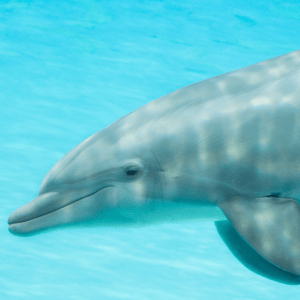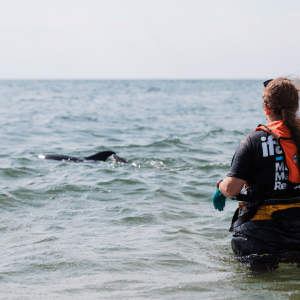ETHICAL DOLPHIN RESCUE AND REHABILITATION EFFORTS

The heartwarming tale of Winter and the Clearwater Marine Aquarium brought significant and well-deserved attention to the non-profit’s mission of rescuing, rehabilitating, and releasing marine life, including dolphins. Organizations like these are dedicated to responding to marine emergencies and work with agencies like NOAA and use guidelines established by the Marine Mammal Protection Act, to provide the best, least invasive care for wounded or sick mammals, like dolphins. Over the last decade, more than 40,000 marine standings have been reported. Ethical marine life rescue and rehabilitation organizations keep their work behind closed doors, using facilities that are not open to the public. This is a signal that their mission is focused on helping the animals, and not entertaining human visitors. The goal of these organizations is releasing the dolphin back into the wild, and keeping them at the facility is the last resort.
Locals and visitors along the Florida Panhandle may encounter a beached, stranded, or visible disoriented dolphin.
While your instincts might be to move quickly to help the animal, there are some best practices that can help keep you safe and ensure the best chance of a full rehabilitation and release for the mammal.

- Don’t try to move the animal yourself. The team that comes into to rescue stranded dolphins and sea turtles have hours and hours of training and are sanctioned by the Fish and Wild Life Commission to carry out their work. Remain at least half a football field away from the stranded or injured dolphin until a rescue organization provides more direction and instruction.
- Observe the area. Are there other dolphins around? Take note of the wild life in the area, which can provide clues about the nature of the injury or illness.
- Resist the urge to release the entangled animal from fishing wire and debris. The animal may have an infection from the wounds created by the lines or plastic, and releasing it back into the water without treatment could endanger it.
- Provide as much information to the rescue organization as you can. Note the size and species of the animal. Take photos if you can. This will help the rescuers bring the most appropriate equipment to help the animal.
- Listen carefully and follow all instructions the organization provides to you. You may be asked just to stay where you are, avoid approaching the animal and ensure others keep their distance as well. If you are assigned a task, it will most likely involve setting up a perimeter, covering the animal with towels or seaweed.
- The best way to protect the marine life along the Emerald Coast is preventive. Dispose of your trash properly before leaving the beach.
- Animals may mistake fishing lures and hooks for food, so be sure to dispose of them before you leave.
- Leave your helium balloons at home. Marine life often mistakes defeated balloons for jellyfish, and eats them. Balloons and other trash are indigestible, so they may cause the animal to starve.
- Cut the plastic rings that hold six packs together and recycle where appropriate.
To see dolphins in their native habitat, check out our eco-tour and sunset cruises at the top of the page!
